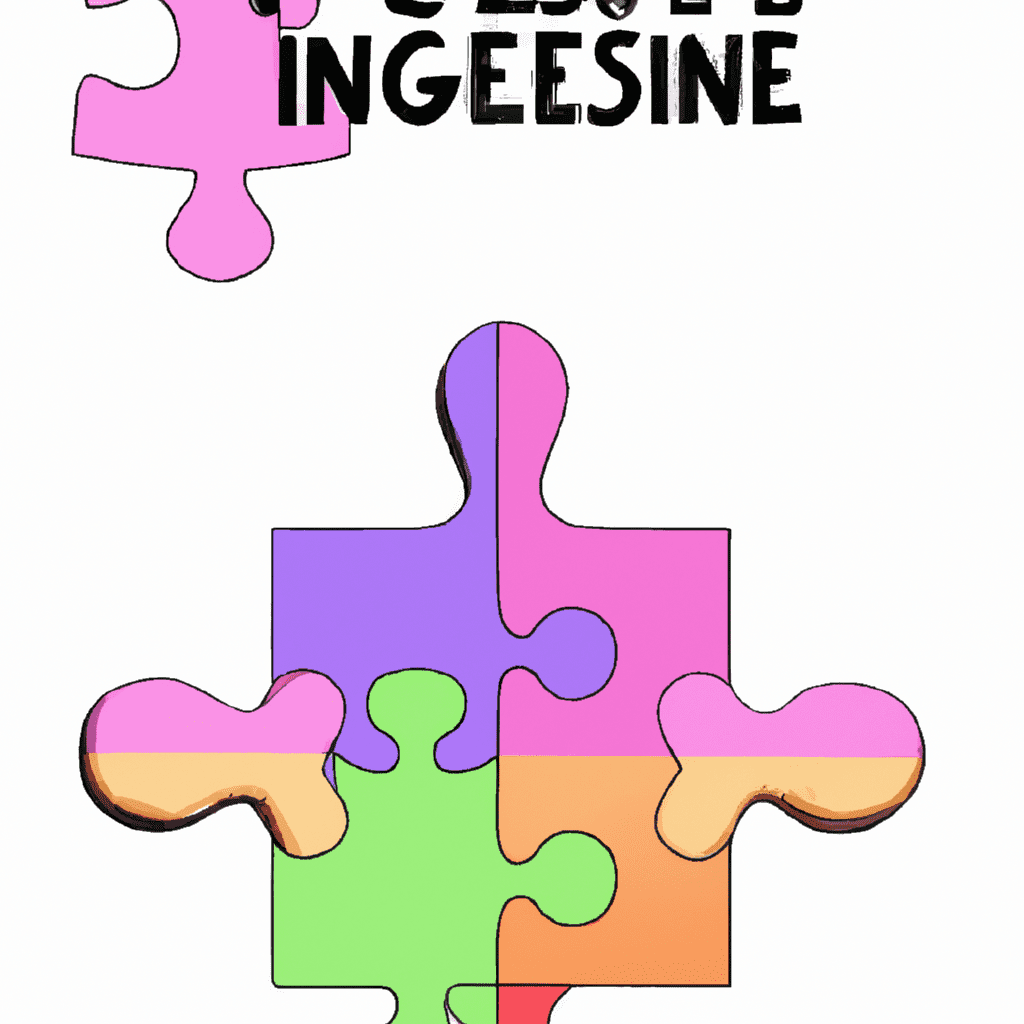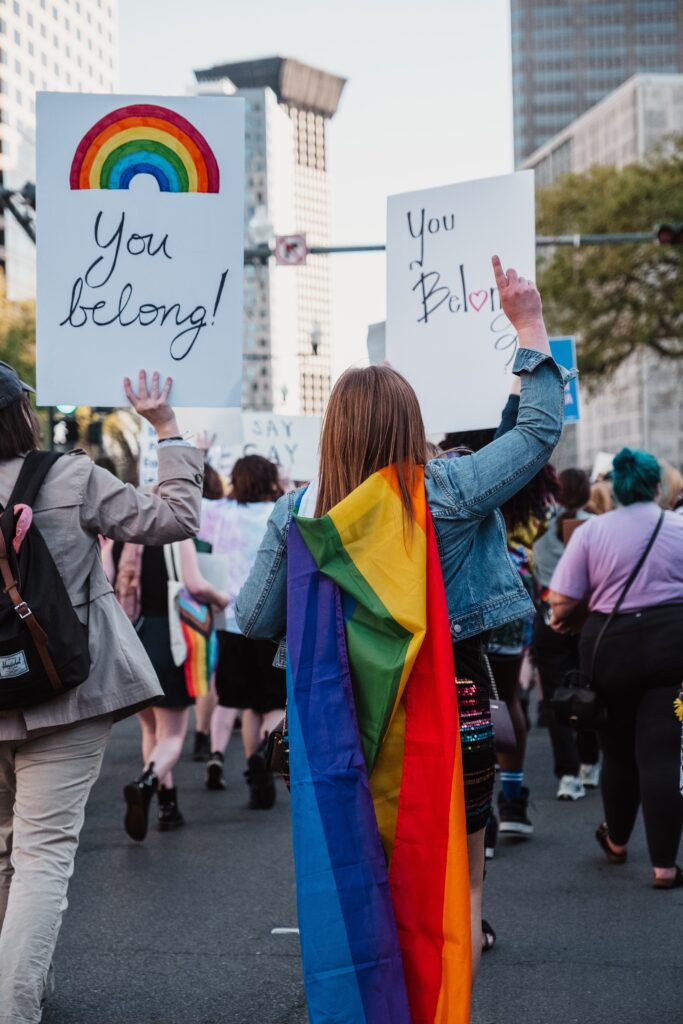

In this article, you will gain valuable insights into the important topic of gender identity and understand how to offer support to LGBTQ+ kids and teens. We will explore a range of key aspects, including the challenges faced by individuals in discovering their true selves, the impact of societal norms and stereotypes, and the crucial role that acceptance and understanding play in fostering a safe environment.
By delving into this subject matter, we aim to provide you with the necessary tools to become a compassionate and empowering ally for LGBTQ+ youth. So, let us embark on this journey of exploration and learn how we can make a positive difference in their lives.
Understanding Gender Identity
The concept of gender
Gender refers to the socially constructed roles, behaviors, and expectations that society assigns to individuals based on their sex. It is important to recognize that gender is not limited to the binary understanding of male and female. Rather, it exists on a spectrum that encompasses a variety of identities and expressions.
Gender identity vs. biological sex
While biological sex refers to the physical and physiological characteristics that distinguish males from females, gender identity refers to one’s internal sense of gender.
It is important to note that gender identity may not necessarily align with an individual’s assigned sex at birth.
The spectrum of gender identity
Gender identity is not confined to just male and female. It is a diverse and inclusive spectrum that includes transgender, genderqueer, genderfluid, non-binary, and many other identities.
Each person’s experience with gender identity is unique, and it is crucial to respect and validate individual identities.
The LGBTQ+ Community
Definition of LGBTQ+
The LGBTQ+ community is an umbrella term that includes individuals who identify as lesbian, gay, bisexual, transgender, queer, and more. This community celebrates diversity in sexual orientations, gender identities, and expressions.
Different sexual orientations and gender identities
Sexual orientation refers to an individual’s emotional, romantic, and/or sexual attraction towards others. It can include being heterosexual, homosexual, bisexual, pansexual, and more.
Gender identity encompasses an individual’s deeply held sense of being male, female, or something else, which may not necessarily align with their assigned sex at birth.
Importance of inclusive support


This image is the property of images.unsplash.com.
Creating inclusive and supportive environments for LGBTQ+ individuals is crucial to their well-being and overall development. When individuals feel accepted and supported, they are more likely to thrive and express themselves authentically. Inclusive support is essential in schools, families, communities, and healthcare settings.
Challenges Faced by LGBTQ+ Kids and Teens
Bullying and discrimination
LGBTQ+ kids and teens often face higher rates of bullying and discrimination compared to their peers. They may experience verbal, physical, and emotional abuse, which can negatively impact their mental health and self-esteem. It is important to address and prevent bullying to create safe environments for all.
Mental health issues
LGBTQ+ individuals, especially kids and teens, are at a higher risk of experiencing mental health issues such as anxiety, depression, and suicidal ideation.
These challenges can arise from societal stigma, lack of acceptance, and internalized homophobia or transphobia. Providing mental health support is crucial in promoting their wellbeing.
Family rejection and social isolation
Some LGBTQ+ kids and teens face family rejection, which can lead to feelings of isolation and or homelessness. Lack of support from loved ones and feeling like outcasts in their own homes can have serious consequences on their mental and emotional health. It is vital to promote acceptance and understanding within families and communities.
Supportive Environments
Creating safe spaces
Creating safe spaces means establishing environments where LGBTQ+ individuals feel welcome, respected, and included. This involves implementing anti-bullying policies, educating staff and students, providing resources, and promoting a culture of acceptance and support.
Building inclusive school policies
Schools play a crucial role in supporting LGBTQ+ students. Implementing inclusive policies that address gender identity, use appropriate pronouns, and provide support systems such as LGBTQ+ student groups and counseling services is essential in fostering a nurturing educational environment.
Supportive healthcare services


This image is property of images.unsplash.com.
Providing access to healthcare services that are knowledgeable and sensitive to the needs of LGBTQ+ individuals is crucial. Healthcare professionals should be trained in culturally competent care, which includes understanding the unique healthcare needs and challenges faced by this community.
Promoting Acceptance and Understanding
Educating families and communities
Education is key in promoting acceptance and understanding of diverse gender identities and sexual orientations. By providing information, and resources, and facilitating open discussions, families and communities can broaden their knowledge, challenge stereotypes, and foster acceptance.
Fostering empathy and respect
Empathy and respect are foundational in promoting a positive and inclusive environment for LGBTQ+ kids and teens. Encouraging individuals to step into others’ shoes, listen without judgment, and recognize the importance of equal rights fosters empathy and respect.
Addressing myths and misconceptions
Addressing myths and misconceptions about LGBTQ+ individuals is crucial in dismantling stereotypes and promoting understanding. By providing accurate information and dispelling misconceptions, we can create a more accepting and inclusive society.
Tools for Parents and Caregivers
Seeking professional guidance
Parents and caregivers might benefit from seeking professional guidance when it comes to understanding and supporting their LGBTQ+ children. Mental health professionals, support groups, and LGBTQ+ organizations can provide valuable resources, guidance, and a safe space to learn and grow.
Open communication and active listening
Creating an open and non-judgmental line of communication is essential for parents and caregivers. Actively listening to their children’s experiences, concerns, and needs helps establish trust and fosters healthy dialogue. It is important to create an environment where children feel safe to express their true selves.
Providing unconditional love and support


This image is the property of images.unsplash.com.
One of the most critical tools parents and caregivers can provide is unconditional love and support. Assuring LGBTQ+ kids and teens that they are loved and accepted for who they are can make a world of difference in their self-esteem, mental health, and overall well-being.
Resources for LGBTQ+ Kids and Teens
Support helplines and online communities
Support helplines and online communities provide a lifeline for LGBTQ+ kids and teens who may feel isolated or in distress. These resources offer a safe space to connect, seek guidance, and find support from peers and professionals who understand their unique challenges.
Counseling and therapy options
Counseling and therapy can be instrumental in supporting the mental health of LGBTQ+ kids and teens. LGBTQ+ affirmative therapy, which is sensitive to their specific needs, can help address internalized stigma, build resilience, and promote self-acceptance.
Advocacy and youth organizations
Advocacy organizations and youth-based organizations focusing on LGBTQ+ rights and support play a crucial role in empowering and uplifting young individuals.
These organizations provide resources, mentoring, and opportunities to get involved in activism, fostering a sense of belonging and empowerment.
Navigating School and Educational Settings
Addressing gender identity in the curriculum
Including diverse perspectives on gender identity and sexual orientation in the curriculum promotes understanding and acceptance among students.
Integrating LGBTQ+ history, literature, and positive representations in educational materials helps create inclusive learning environments.
Supportive teacher-student relationships
Teachers and educators have an influential role in shaping the experiences of LGBTQ+ kids and teens in schools. Establishing supportive teacher-student relationships, using inclusive language, and challenging discriminatory behavior can positively impact students’ mental health and academic performance.
Taking action against discrimination


Schools must actively address and challenge discrimination and bullying. Implementing policies and procedures to address instances of discrimination, providing staff training, and cultivating a culture of respect contribute to an inclusive and safe learning environment.
Building Resilience and Self-Acceptance
Building self-esteem
Building self-esteem is an ongoing process for LGBTQ+ kids and teens. Encouraging their talents and interests, affirming their identities, and celebrating their accomplishments can help boost self-esteem and foster a positive self-image.
Developing coping mechanisms
LGBTQ+ kids and teens may face adversity and stress due to societal pressures and discrimination. Developing healthy coping mechanisms such as seeking support, engaging in self-care activities, and practicing mindfulness can help them navigate challenges and build resilience.
Encouraging self-expression
Encouraging self-expression allows LGBTQ+ kids and teens to explore their identities, interests, and talents freely. Providing a space where they can express themselves through art, music, fashion, or other creative outlets can be empowering and affirming.
Legal and Policy Considerations
Legislation protecting LGBTQ+ rights
Legal protections are crucial in ensuring the rights and safety of LGBTQ+ individuals. Laws that prohibit discrimination based on sexual orientation and gender identity, allow for legal recognition of gender changes, and protect LGBTQ+ individuals from hate crimes are essential in fostering an inclusive society.
School policies and anti-bullying measures
Schools should have comprehensive policies in place to prevent and address bullying, discrimination, and harassment based on sexual orientation and gender identity. These policies should be enforced consistently and educate both staff and students about their rights and responsibilities.
Healthcare access and gender-affirming treatments


Ensuring access to inclusive healthcare services and gender-affirming treatments is vital for the well-being of LGBTQ+ individuals. Policies must be in place to eliminate barriers and discrimination in healthcare settings and ensure equitable access to necessary medical care for transgender and gender non-conforming individuals.
By understanding and supporting the gender identities and sexual orientations of LGBTQ+ kids and teens, we can create a more inclusive and loving society.
It is our collective responsibility to educate ourselves, challenge biases, and advocate for the rights and well-being of all individuals, regardless of their gender identity or sexual orientation. Together, we can foster environments where everyone feels safe, accepted, and celebrated for who they truly are.







